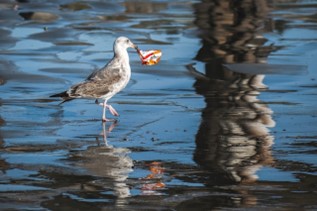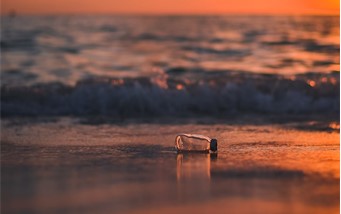Plastic Pollution and the Disappearance of Marine Life
Plastic is a ubiquitous part of everyday life. It is in clothes, packaging, and recently, even in our bodies. 4ocean reviews that while there are arguments that plastic is a huge convenience, there is no question that plastic can also have negative effects on the planet, especially on marine life.
How Plastic Pollution Affects Marine Life
Plastic pollution includes everything from plastic bottles to plastic straws and anything else that is used once and then thrown away. Occasionally people will throw their trash in the ocean or waste removal companies will dump huge amounts of garbage are dumped into waterways because there is nowhere else to put it.
Many sea creatures will accidentally eat plastic garbage (plastic bags can look like jellyfish or smell like food), or they will become entangled in plastic and choke or suffocate to death. While plastic pollution affects all marine life, it is especially harmful to these five marine animals.
- Sea Turtles
- Seals and Sea Lions
- Marine Bird Species
- Fish
- Whales and Dolphins
All of these animals are vulnerable populations due to human activity and pollution, but plastic waste is especially dangerous to these species. Many of them think plastic is food and when they ingest it, it blocks their digestive system, which can result in death by starvation.
Unfortunately, plastic pollution includes items in all sizes. Even if an animal is able to recognize and avoid a bigger piece of plastic, there are a lot of microplastics, which are so small that they can get into the gills of animals (such as fish), making it harder for humans to help get rid of. Sometimes these microplastics are sharp and can puncture organs.
Many marine animals also become tangled up in plastic garbage, which can choke. Some plastic bands can wrap around marine animals’ limbs, which can cut off circulation and cause a lot of discomfort or loss of limb use, causing death.

What Can Be Done
A lot of the news about plastic pollution and marine life can sound depressing but there are some actionable steps that can be taken.
Be a Conscientious Shopper
A lot of clothing items are made with plastic so an easy way to reduce microplastics is to stop buying from companies that make their clothes with synthetic fabrics. Read labels and look for natural fibers, such as cotton. This ensures that every time an item of clothing is washed or dried, it will not be creating plastic pollution.
In addition, there is no need to buy or use plastic when shopping. Instead of using plastic bags for groceries or produce, bring a reusable bag or use a mesh produce bag. There are a lot of options for cute reusable straws, containers for household products, and makeup. It just takes a little extra effort!
Clean Up After Social Events
Outdoor social events usually generate a lot of one-time-use products for convenience and cleaning purposes. The ocean, lake or stream might be closer than the garbage at a picnic event but polluting our waterways will have long term determinantal issues for our planet.
Organizations like 4ocean have also hosted beach cleanup days, which are a way to have fun, make a difference in the community, and help save marine wildlife.


